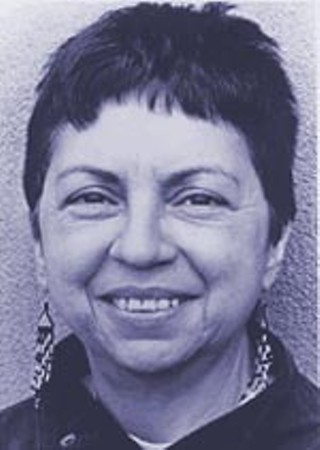TV Eye
Dreaming in prime time
By Belinda Acosta, Fri., May 28, 2004

Glossy magazines litter my work space. They allow me to follow the TV industry from afar, to learn who's making what decisions and why. But they also tell me who to watch and what to buy. What the magazines say is important is repeated on TV. When I was younger, I used to think, wow, what a coincidence.
Now, I know better.
Having spent seven years watching TV and other popular media, I know that if you watch this stuff uncritically, after a while it's easy to think, yeah, I do need that three-tiered burger and a cold beer, after which I can waddle down to the nearest weight-loss clinic. If that fails, now TV is telling me cosmetic surgery is the answer. What I think or feel is not as important as how I look. But there's a more debilitating message that, until recently, I thought I was inured to. I am invisible.
"For every two actual Latinos viewers see in real life, they only see one on primetime network broadcasts," according to Fall Colors 2003-2004: Prime Time Diversity Report, released last month by the media watchdog group Children Now. While the study indicated that there were 6% more Latino characters in 2003 than in the previous year, they were often more likely to be cast in stereotypical roles.
It all makes me weary. But not for the reason you might expect.
Gloria Anzaldúa left the Earth on May 15. A Tejana, a UT Austin graduate, openly lesbian long before it was fashionable, and a public intellectual, her groundbreaking book, Borderlands/La Frontera: The New Mestiza, is the backbone upon which many scholars have climbed up to build their careers. Her books are often required reading in women's studies, Chicano studies, and cultural studies courses. But what really took the air from my chest was when a colleague from Dallas asked if I'd seen any mention of Anzaldúa's passing in any of the large media outlets. The answer was no. Since then, the San Francisco Chronicle ran an obit on May 20. Locally, Latino USA ran a tidy piece during its May 21 episode. Part of me knows not to expect The New York Times to wax nostalgic. And do I really expect 20/20 to mark the occasion with an hourlong special, or to see Gloria Anzaldúa as the subject of a Lifetime movie? Will Oprah say her name? The other part of me feels even more disenfranchised from the media than ever before. Why is this icon of Chicana studies not even worth a crawl on CNN or any other news outlet?
Public intellectuals are not big on the pop culture radar screen. But it's still aggravating to me that the large media – the same media hungry for the brown dollar – are as oblivious to Gloria Anzaldúa's death as they were to slain Tejana singer Selena. The outpouring of grief for Anzaldúa is not as visible as Selena's. Anzaldúa did not perform in stadiums. Her work took place at her desk, in classrooms, at community centers, or anywhere where progressive men and women meet. Her influence is unquestionable.
So, here I am, pondering the loss of this figure of Chicana letters, wondering what it would be like if every once in a damn while, the experiences and figures from all of America's cultural histories were visible in prime time. Here are some things I've considered:
For every George Lopez, there are at least three King of Queenses, Yes, Dears, or According to Jims, three shows wondrous for their mind-numbing blandness. I'm not saying that mediocrity is the benchmark, but the space to be mediocre or excellent or something in between is not too much to ask.
Forget Colonial House or The Simple Life. How about Farmworker Life, where folks who never gave a thought to how that green salad got to their table go out and make a living following the crops for a season?
When will characters like Lane (Gilmore Girls) or Ramona (Less Than Perfect) or Alexx (CSI: Miami) be the stars of their own shows?
Dreaming in prime time might seem a foolish exercise, but when you're invisible, dreaming is necessary for survival. A way of reminding yourself that you live in the world, even if that world is not reflected in the popular media. I may not be able to forge a new media landscape with my humble words, and certainly not alone. But imagining it is the first task. We just, as Gloria Anzaldúa suggested, have to design the architecture.








